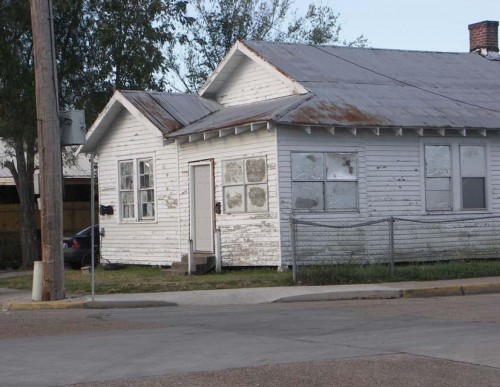Tuesday, Nov. 16
November 16, 2010
Neighbors angered over blight
November 18, 2010Public oyster harvesting grounds opened Monday along Louisiana’s coast, but on a smaller scale than usual, in part because of complications from the BP oil spill.
Louisiana’s Wildlife and Fisheries Commission recently voted to indefinitely delay the opening for a broad area east of the Mississippi River, which state wildlife officials estimate produces about 28 percent of the oysters harvested in the state.
Many oyster harvesters and dealers supported closing that area and a tiny area west of the river, even though the state has fewer marketable oysters than usual because of natural and man-made factors, including the spill. They said dredging for oysters now might destroy the young seed oysters n called spat n that have been found in the area.
“It’s a good move because we’re really low on the resource of seed oysters that is the basis of the industry,” longtime oysterman Pete Vujnovich said last week. Spat oysters can be transported to other oyster grounds to replenish them or they can be harvested later when they reach market size, Vujnovich said.
Such closures are often controversial. But at last month’s meeting of the Louisiana Oyster Task Force, comprising people in a variety of oyster-related businesses, support for the continued closure was nearly unanimous.
Still, Mike Voisin, a principal in the family owned Motivatit Seafood of Terrebonne Parish, voted against it. Task force chairman John Tesvich, who, like Voisin, is in the oyster processing business, didn’t vote, but later said he would like to see more public areas open.
Voisin said failure to harvest marketable oysters means a continued shortage that could lead to a long-term loss of market share as businesses turn to other areas.
It’s a legitimate concern, Vujnovich said: “You don’t want to lose the people you sell to.” But he supports the closure as being in the industry’s best long-term interest.
The oil spill clobbered a business hit hard five years earlier by hurricanes Katrina and Rita.
After the spill, precautionary closures shut down production from some of the state’s richest areas, which include leases harvested year round. That led to an oyster shortage.
Then there was the diversion of fresh water from inland waterways into salty oyster growing areas n an attempt to keep the oil out that also killed oysters.
Nature played a part as well, said Randy Pausina, an assistant secretary in the Department of Wildlife and Fisheries.
“It was going to be one of those summers where we had higher than normal mortality,” he said. An extremely hot summer and high Mississippi River levels both were factors, he said.
Voisin and other processors currently are getting oysters from other areas of the Gulf of Mexico.
“Texas is producing a lot of oysters right now,” Voisin said. But, he added, the availability is likely to be spotty at times heading into the holiday season, meaning shorter supplies and higher prices.







